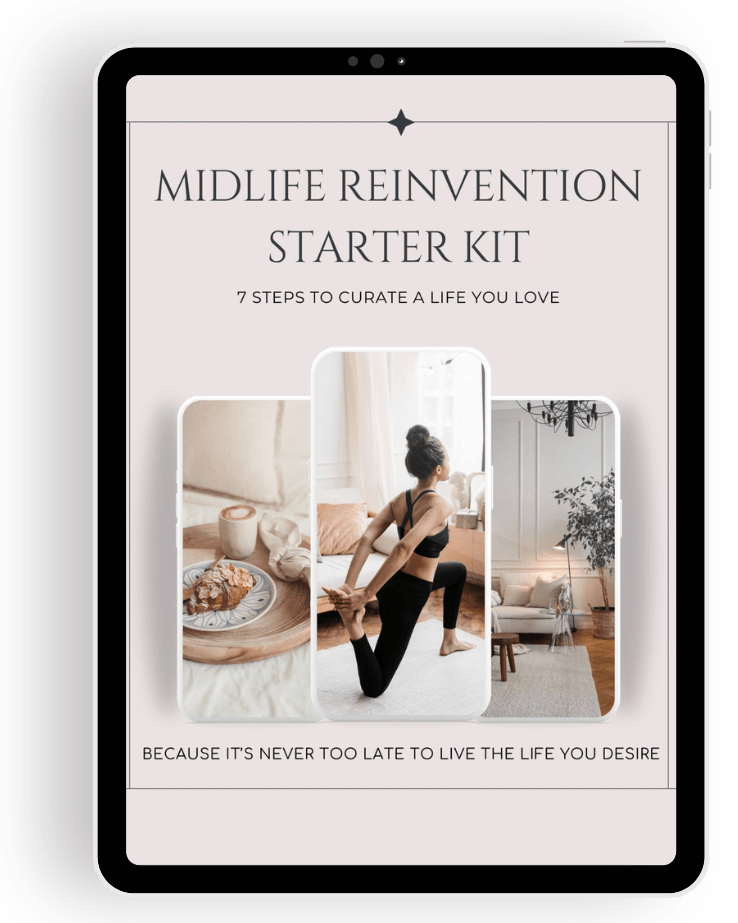Have you ever felt overwhelmed by the flood of health trends and advice on your social feeds? You’re not alone. Here, we’re going back to the basics, focusing on what wellness truly means to you. This journey is an active pursuit, involving actively seeking and engaging in activities, choices, and lifestyles that lead to holistic health and well-being. It is personal and unique, crafted by your desires and needs, not dictated by fleeting trends.
READ MORE: 6 Basic Dimensions of Wellness
So let’s start this adventure by exploring what wellness means, setting personal goals, and embracing the steps that will lead you to live your best life. Join us as we embark on this transformative path, step by step, towards holistic health and happiness.

1. What does Wellness mean to You?
As we continue your journey into wellness, it’s essential to define what wellness means on a personal level. Wellness defines the active pursuit of activities, choices, and lifestyles that lead to a state of holistic health, encompassing physical, mental, emotional, social, environmental, and spiritual well-being.
What areas feel out of balance? What does a healthy lifestyle look like for you? Is it about having more energy, managing stress, or perhaps cultivating better relationships?
READ MORE: The Wellness Wheel
By understanding your definitions of wellness, you empower yourself to make meaningful changes that resonate with your true needs. This step is not about adopting a predefined path but about discovering your own.
Reflect on the moments when you feel your best and ask why. Use these insights to shape a wellness vision that feels authentic and achievable. One that fills you with enthusiasm and drives you forward on your unique path.

2. Set Personal Wellness Goals
Now that you’ve explored what wellness means to you, it’s time to translate that understanding into actionable goals. Setting personal wellness goals is about creating clear, achievable objectives that guide your daily actions towards better health and happiness.
READ MORE: Wellness Journal – How to Start
1. Physical Health Goals
If increasing physical activity is a priority, consider adopting a new exercise routine that fits your personality and lifestyle, such as starting a morning yoga routine, joining a local dance class, or setting a daily step count. Each goal should be specific to what you enjoy and what you realistically can commit to.
2. Nutritional Goals
For those focusing on improving nutrition, goals might include incorporating healthy foods, such as a new vegetable, into your meals each week. Maybe reducing processed food intake, or exploring diverse culinary styles that incorporate healthy, balanced ingredients. Pay attention to how changes in your diet make you feel and adjust accordingly.

3. Mental Health Goals
Mental wellness can be enhanced by setting aside time for daily meditation and starting a gratitude journal. Aim for 7-9 hours of sleep per night to support overall health and well-being. Or scheduling regular digital detox days to decrease screen time and increase peace of mind. Taking more breaks, slowing down sometimes.
4. Emotional and Social Goals
Strengthening your emotional and social health can greatly enhance your overall well-being. Set goals to nurture these aspects by scheduling regular coffee meetups or lunch dates with friends each week.
Alternatively, establish a routine for phone or video calls with family members who are far away to maintain strong connections. These consistent social interactions not only enrich your emotional life but also provide a network of support, making your wellness journey more enjoyable and sustainable, ultimately leading to a fulfilling life.
5. Spiritual Goals
If you find value in connecting with your spiritual side, your goals could involve exploring different spiritual practices. Attending community services perhaps, or incorporating meditation or prayer into your daily routine. Spiritual reading, whether it’s philosophical texts, religious scriptures, or inspirational works, deepens your understanding and connection.
You might also find solace in creative expression such as journaling, painting, or music, which can be meditative and spiritually uplifting. Lastly, regular retreats – whether a quiet day at a local park or a more structured group retreat – can offer valuable time for reflection and connection with your spiritual self.
By setting varied goals across the different aspects of wellness, you create a balanced approach that encompasses all parts of your being.

3. Educate Yourself
As you continue on your wellness journey, it’s crucial to arm yourself with knowledge. This step is all about educating yourself in areas that you are most passionate about or that will have the most impact on your personal wellness goals.
1. Gather Resources
Start by gathering resources that cover a variety of wellness topics. These might include books, reputable health websites, podcasts, and even documentaries that explore health and wellness from different perspectives. The Digital Library is a great place to start.
2. Vision Board
Create a vision board. It can serve as a powerful visual representation of your wellness journey. This board should include images, quotes, and symbols that resonate with your desired state of health and well-being.
A vision board acts as a daily reminder of one’s goals in the realms of nourishing, Move, Thrive, Recharge, and Reflect & Connect. It might showcase pictures of nutritious foods, preferred physical activities, serene nature scenes for relaxation, and spaces that encourage reflection or connection with others.
3. Learn Holistically
Approach your education holistically – learn about physical, mental, and emotional wellness practices to achieve optimal health. This includes understanding exercise routines, nutritional advice, meditation, and stress management techniques. Understanding the interconnectivity of these areas can help you make more informed decisions about your health.
4. Apply What You Learn
As you learn, start to apply this new knowledge incrementally. If you’re exploring nutrition, try incorporating one new healthy recipe each week. If you’re learning about fitness, introduce new exercises into your routine gradually.
5. Engage with Experts
Consider engaging with experts, such as hiring a personal trainer or health coach, to provide personalised guidance, accountability, and support in achieving your health and wellness goals. This could be through workshops, classes, or even online forums where professionals share their insights. These interactions can provide deeper understanding and personalised guidance.
6. Stay Curious and Flexible
Maintain a spirit of curiosity and be flexible in your learning journey. Wellness evolves as new research emerges, so keep an open mind and be ready to adapt your practices as you gain new insights.
This knowledge is not just about making immediate changes; it’s about equipping yourself with a long-term commitment to your wellness.

4. The Importance of Starting Small
Imagine you’re preparing for a journey. Rather than packing everything you own, you select just the essentials. This approach is not only practical – it’s necessary. The same principle applies to your wellness journey. Starting with small, manageable steps prevents the feeling of being overwhelmed and sets you up for sustained success.
1. Small Steps Lead to Big Rewards
Think of your wellness goals as a series of stepping stones across a river. Each small step in developing healthy habits is manageable and gets you closer to the other side.
These steps, like adding a five-minute meditation to your morning or choosing a healthier snack option, might seem small on their own, but they accumulate, creating significant changes over time. This gradual process helps embed new habits deeply and sustainably into your lifestyle.
2. Creating a Personalised Path
Starting small allows you to customise your journey. You can adjust your pace based on what works best for you, making it easier to maintain your new habits. It’s like sculpting: you start with rough shapes and refine them over time into something beautiful.
This approach ensures that each change is a natural integration into your life rather than a forced imposition. It builds resilience and adaptability—qualities that are essential as your needs and circumstances evolve.

5. Practical Tips for Small, Sustainable Changes
Here are some ideas for small, sustainable changes that can ease you into a healthier lifestyle. Consider these as starting points from which you can expand as you find what works best for you:
- Morning Hydration: Try starting your day with a glass of lemon-infused water, prepared the night before, to refresh and kickstart your metabolism.
- Mindful Morning Routine: Consider integrating a brief meditation into your morning coffee routine. This moment of mindfulness can help centre your day.
- Incremental Physical Activity: Explore basic yoga outdoors or short exercise classes, gradually increasing time as your comfort grows.
- Healthier Food Choices: Experiment with swapping in healthier snacks, like a mix of nuts and dried fruits, to improve your diet gradually.
- Better Home Environment: Opt for essential oils with natural fragrances like rose or jasmine instead of perfumed candles, to uplift your living space.
- Conscious Drinking Habits: When out, you might try choosing lighter drinks and increasing your water intake to promote better hydration.
- Morning Light Exposure: Instead of checking your phone first thing, getting some sunlight by a window or outside can be a refreshing start to your day.
- Green Your Space: Adding a few plants to your apartment might bring a bit of nature into your urban life, enhancing both air quality and mood.
- Structured Screen Time: Set specific times during the day for checking emails and social media to reduce constant screen exposure and improve mental well-being.
- Active Commuting: If possible, try walking or biking to work or the store instead of driving. It’s a great way to fit in daily exercise and fresh air.
- Regular Stretch Breaks: Incorporate five-minute stretch breaks into your workday to reduce stiffness and boost circulation, especially if you spend long hours at a desk.
- Weekend Nature Engagements: Plan weekend activities that involve being in nature, such as hiking, gardening, or a simple picnic in the park.
These ideas are merely suggestions to inspire your adaptations, helping you craft a wellness routine that feels both manageable and rewarding.

6. Creating a Routine
Establishing a daily routine is a cornerstone of a successful wellness journey. It brings structure and predictiveness to your day, making it easier to maintain your new habits over time.
- Morning Ritual: Start with a simple morning ritual that includes hydration, a few minutes of stretching or meditation, and a nutritious breakfast. This sets a positive tone for the day.
- Scheduled Exercise: Designate specific times for physical activity based on your lifestyle. Whether it’s morning jogs, lunchtime walks, or evening yoga, having a set time helps make it a habit. Consider hiring a personal trainer to provide guidance, and accountability, and maintain rhythm in your fitness regimen.
- Mindful Breaks: Integrate short, mindful breaks throughout your day to refresh your mind and reduce stress. This could be deep breathing, a quick walk, or just stepping away from your digital devices.
- Evening Wind-down: End your day with a wind-down routine to help you relax and prepare for sleep. This might include reading, journaling, or a skincare routine that helps signal to your body that it’s time to rest.
- Weekly Planning: Spend some time each week planning your meals, workouts, and any self-care activities. This not only helps you stay organised but also ensures that you prioritise your wellness.
By consistently following a routine, you gradually build a lifestyle that supports your wellness goals, making each day a step towards a healthier and happier you.


7. Tracking Progress
Tracking your progress is an essential part of your wellness journey, as it helps you see how far you’ve come and identifies areas where you might need to adjust your approach. Monitoring your daily habits and wellness activities encourages consistency and motivates you to keep going.
Benefits of Monitoring Your Journey
- Visibility of Progress: Seeing tangible evidence of your efforts can boost your motivation and help maintain your commitment.
- Adjustments and Improvements: Regular tracking allows you to notice what’s working and what isn’t, making it easier to tweak your routine for better results.
- Celebration of Successes: Documenting your achievements gives you reasons to celebrate, reinforcing positive behaviours and practices.
Tools and Methods for Tracking
- Digital Apps: Use apps that track fitness, nutrition, and mental health to keep all your data in one place.
- Journals and Planners: Manual tracking with a journal or planner can be deeply personal and reflective.
- Smart Devices: Wearable technology like fitness trackers can automatically record physical activities, sleep, and even heart rate, providing you with real-time health metrics.

8. Be Kind to Yourself
On this journey, being kind to yourself is like walking with a compassionate friend who encourages you when the path gets steep or the weather turns. This friend reminds you that every step, even the missteps, is part of your progress.
In your daily life, this friend is the voice of self-compassion. It’s the gentle nudge that urges you to pause, breathe, and appreciate your efforts rather than criticise them. It’s the warmth of acknowledging that while today might not have been perfect, it was a day lived with intention.
When you embrace self-compassion, you allow yourself room to grow at your own pace, without the harsh shadows of judgment. Each day, you might write down three things you did well or moments you felt grateful for. These acts of kindness towards yourself reinforce the positive path you’re on, making the journey not just about reaching a destination, but about growing and thriving along the way.
READ MORE: Some Kind Things to do for Yourself
Conclusion: Embrace Your Wellness Journey
As we conclude, remember that starting your wellness journey is about embracing small, sustainable changes and setting personalised goals that resonate with your lifestyle. It’s about educating yourself, establishing supportive routines, monitoring your progress, and above all, practicing kindness towards yourself.
Take the first step today. Begin with one small change, and let that momentum carry you forward. For more guidance, inspiration, and resources, visit Chantfull. We’re here to support you every step of the way as you explore the path to a healthier, more fulfilled life. Let this journey be one of discovery, growth, and joy.
Welcome to the beginning of your wellness journey – a path toward a healthier, more balanced life x



Feel free to sign up to my Friday Morning Love Note HERE! This isn’t just a newsletter - it’s your invitation to pause, reflect, and realign with you. Every week, we’ll journey together to uncover the small, meaningful shifts that will help you design a life that feels uniquely and beautifully yours. Each week, I’ll deliver fresh intentions, uplifting tips, and simple shifts to inspire purposeful, creative living.





